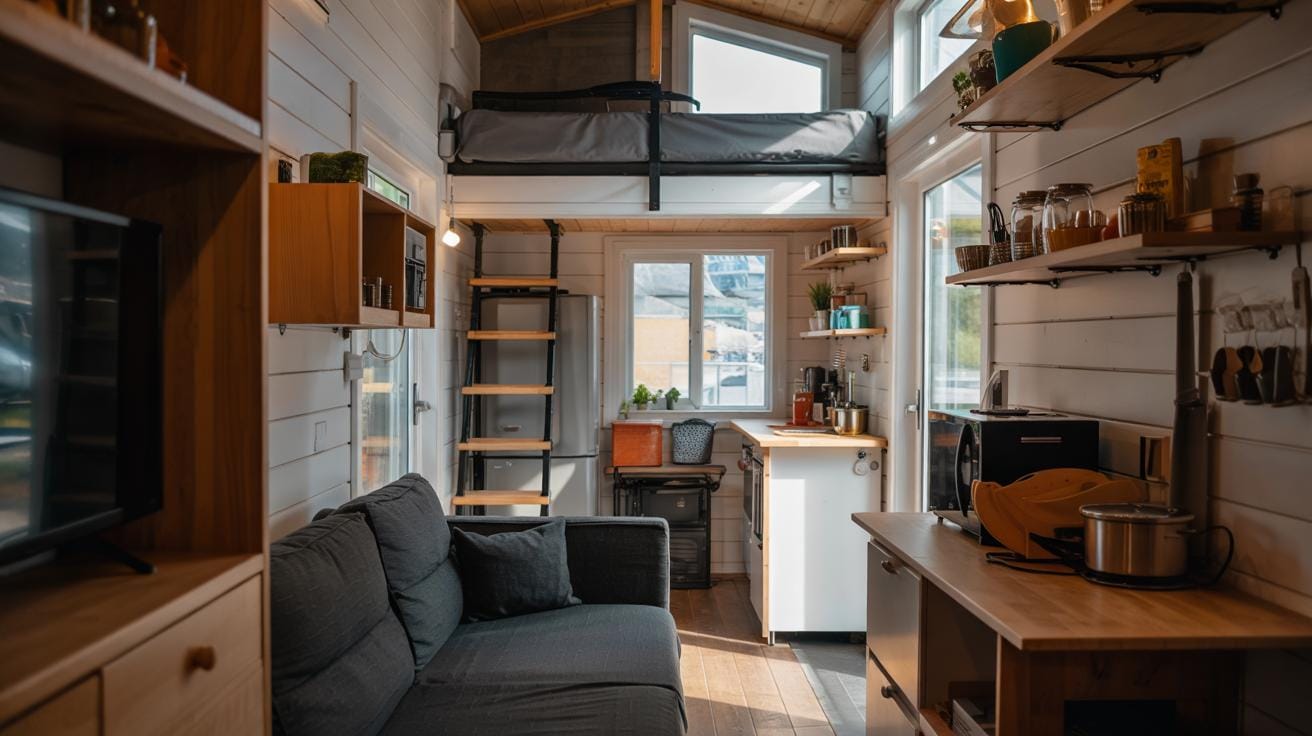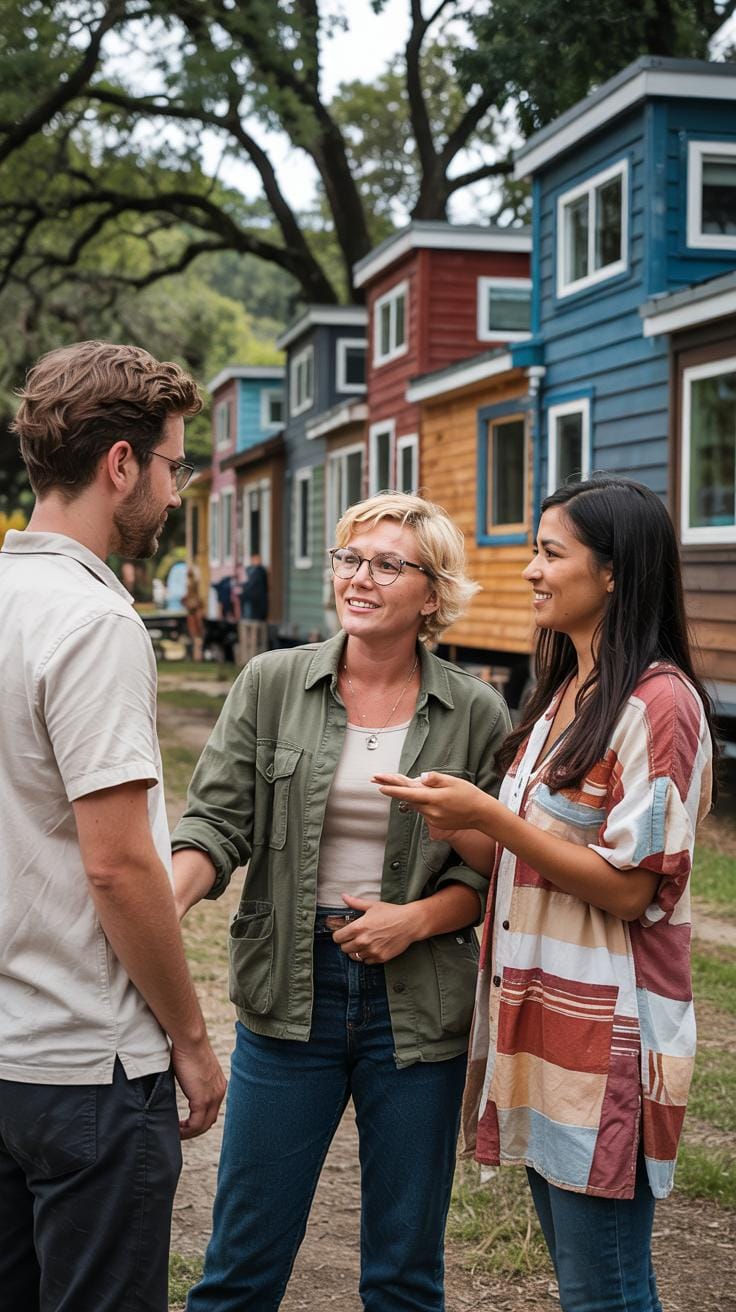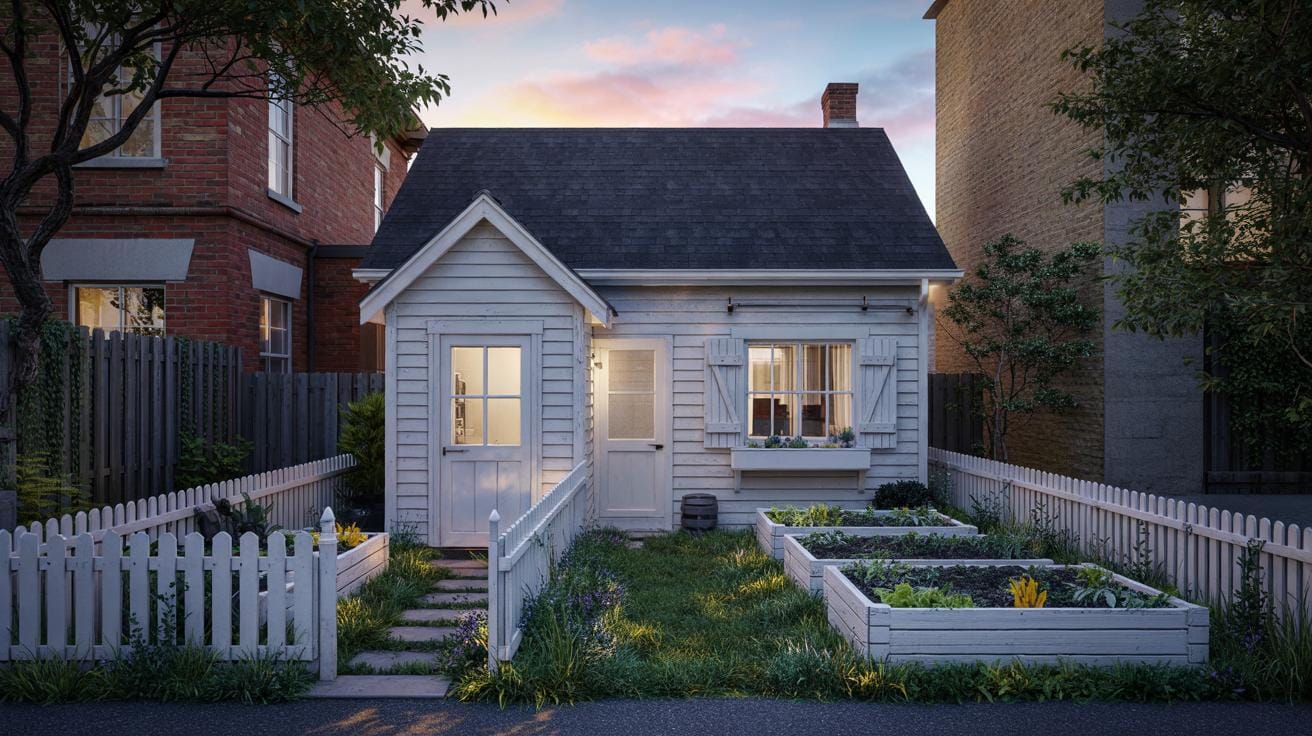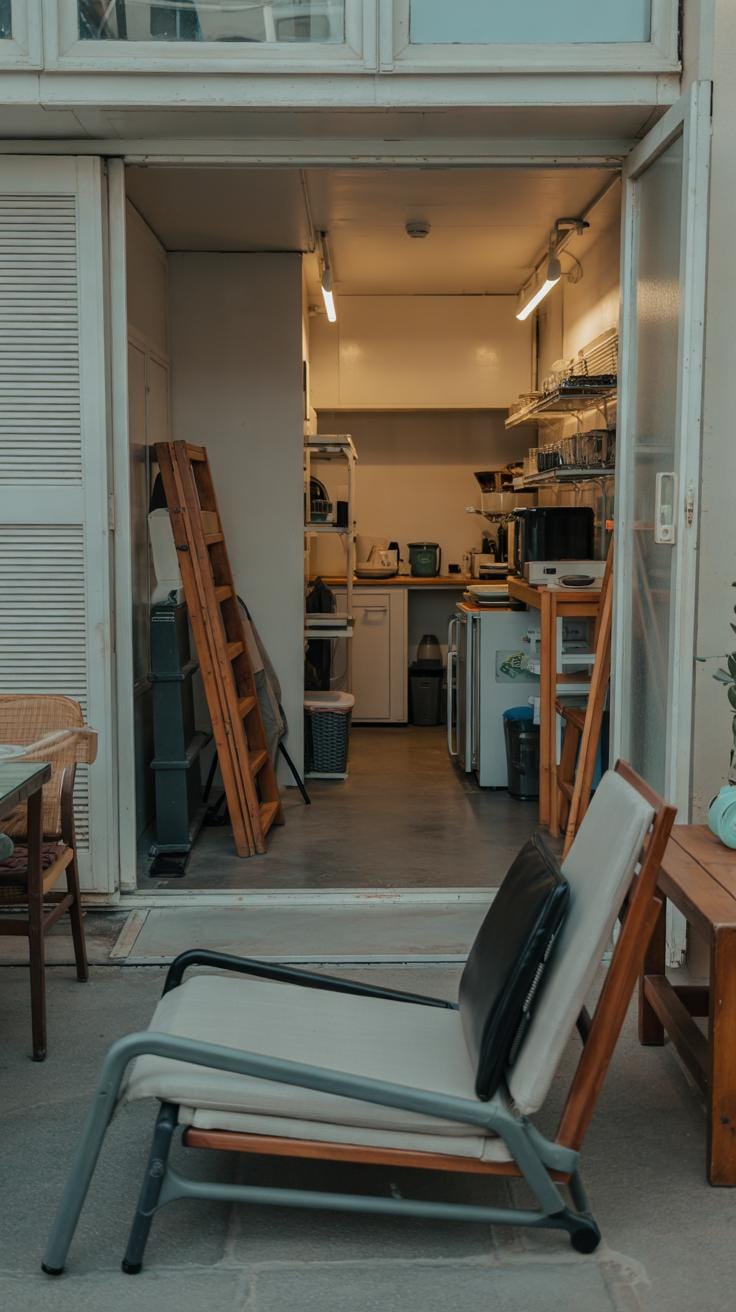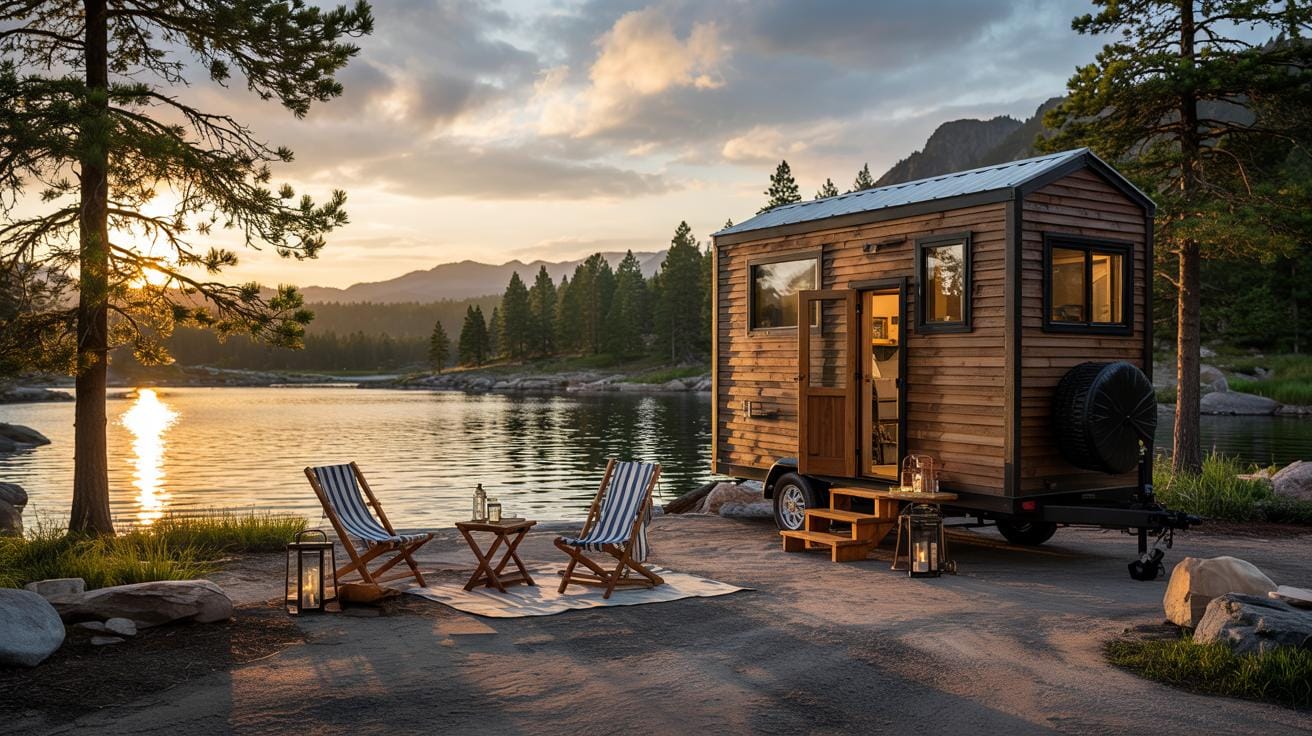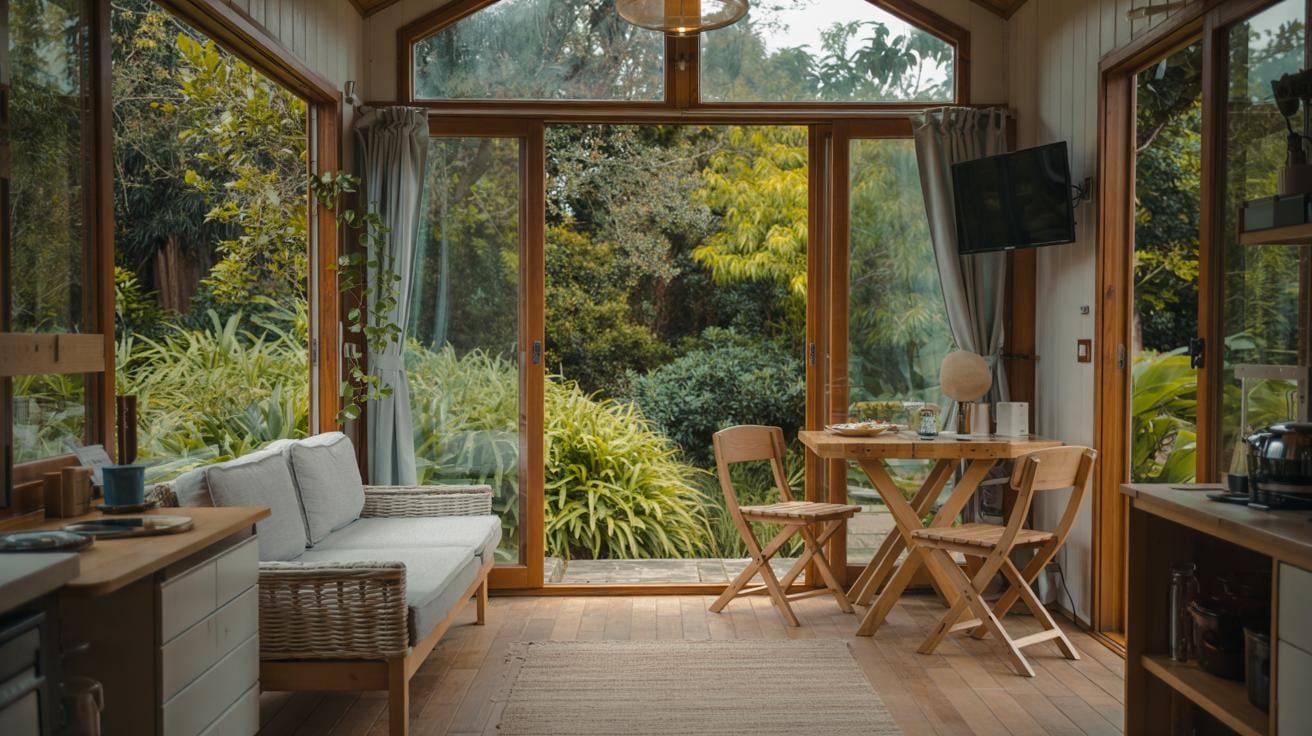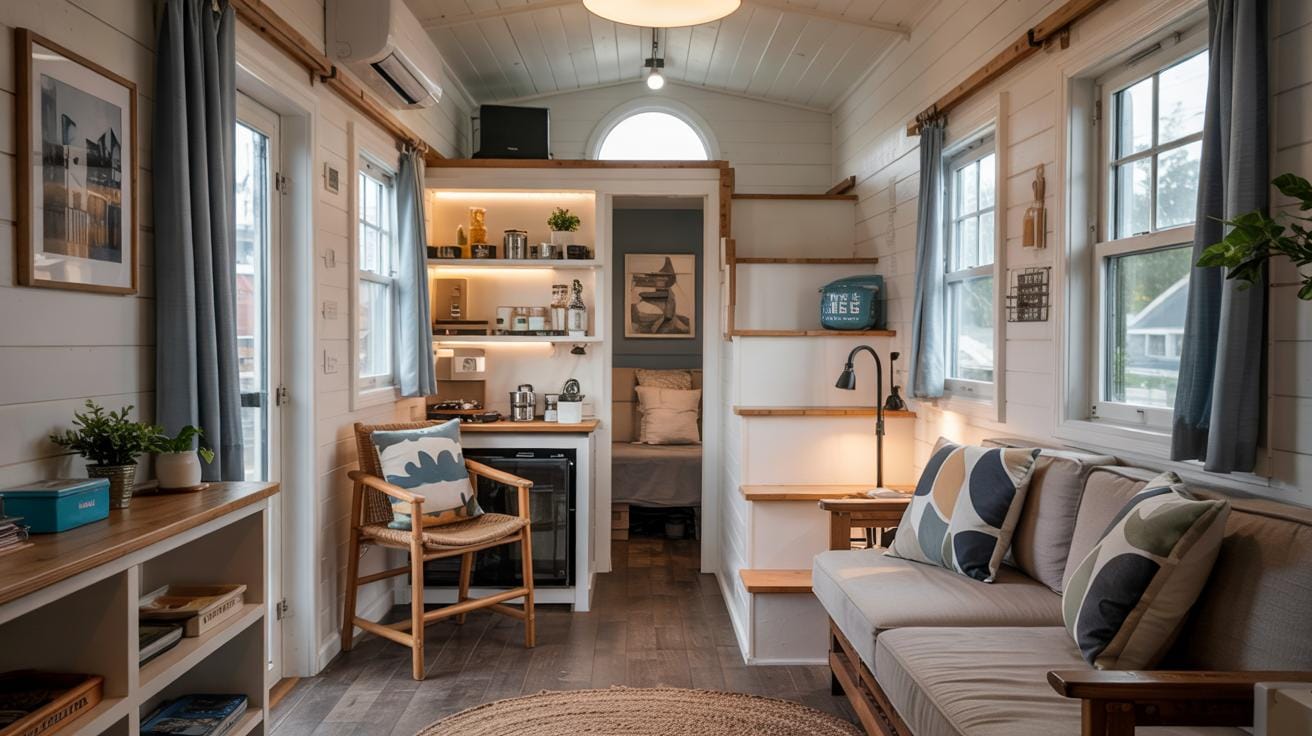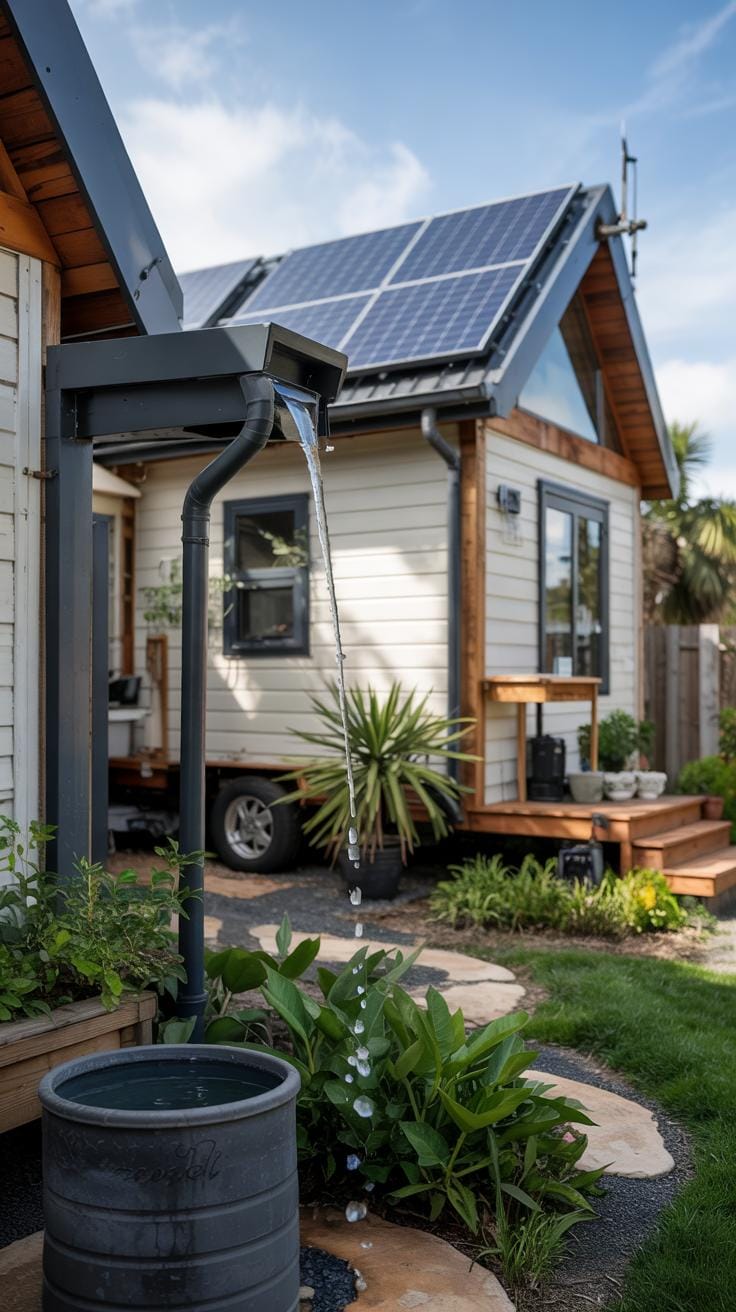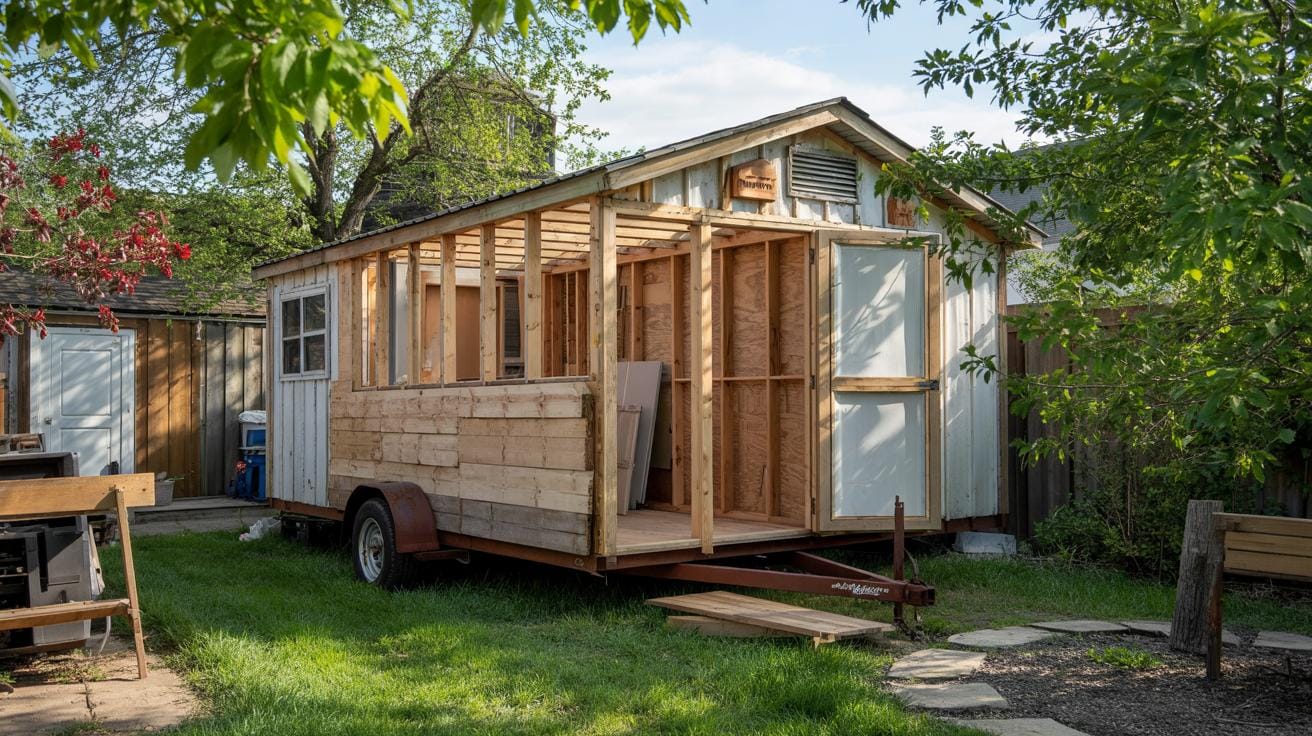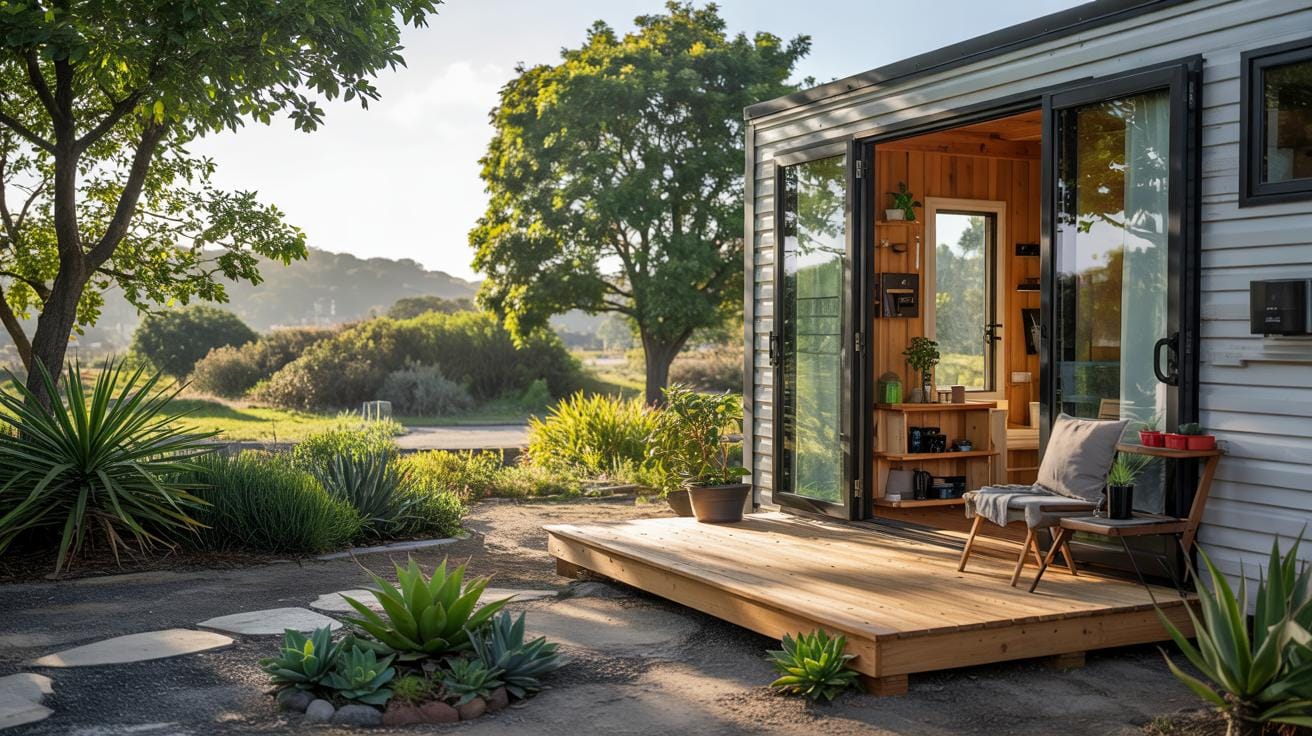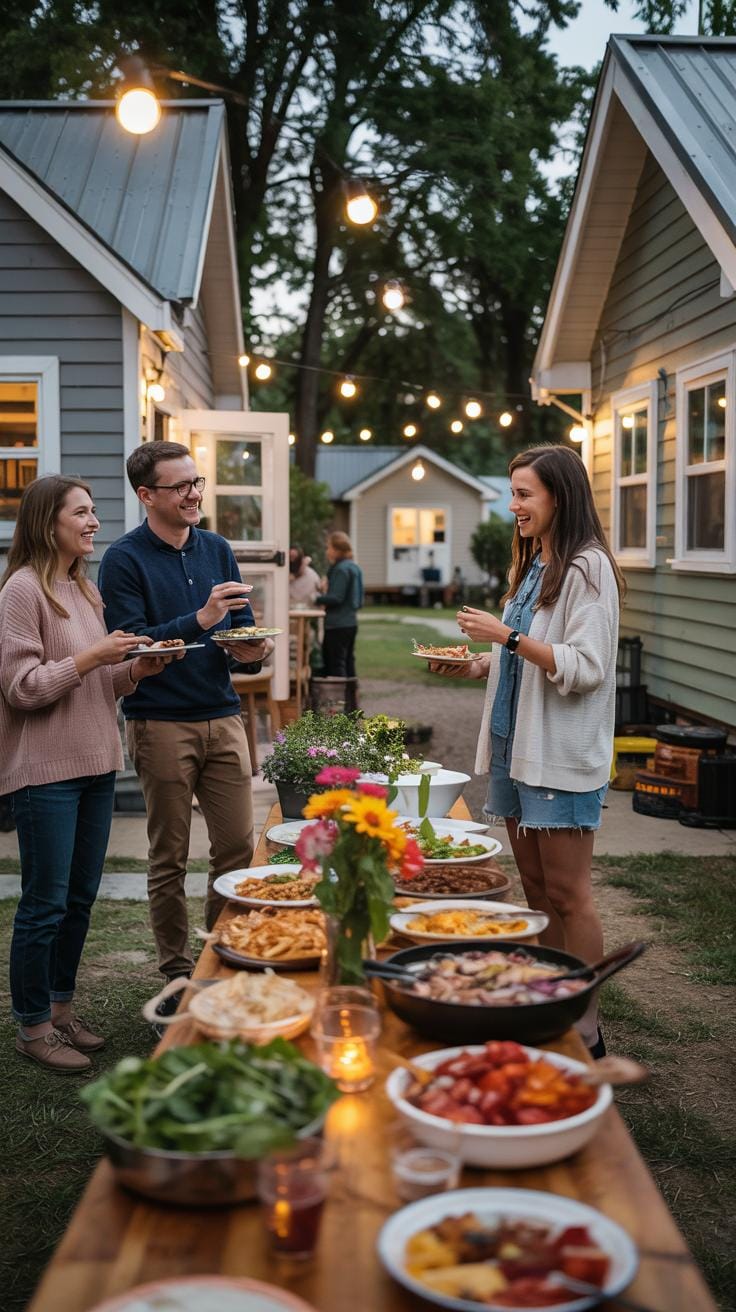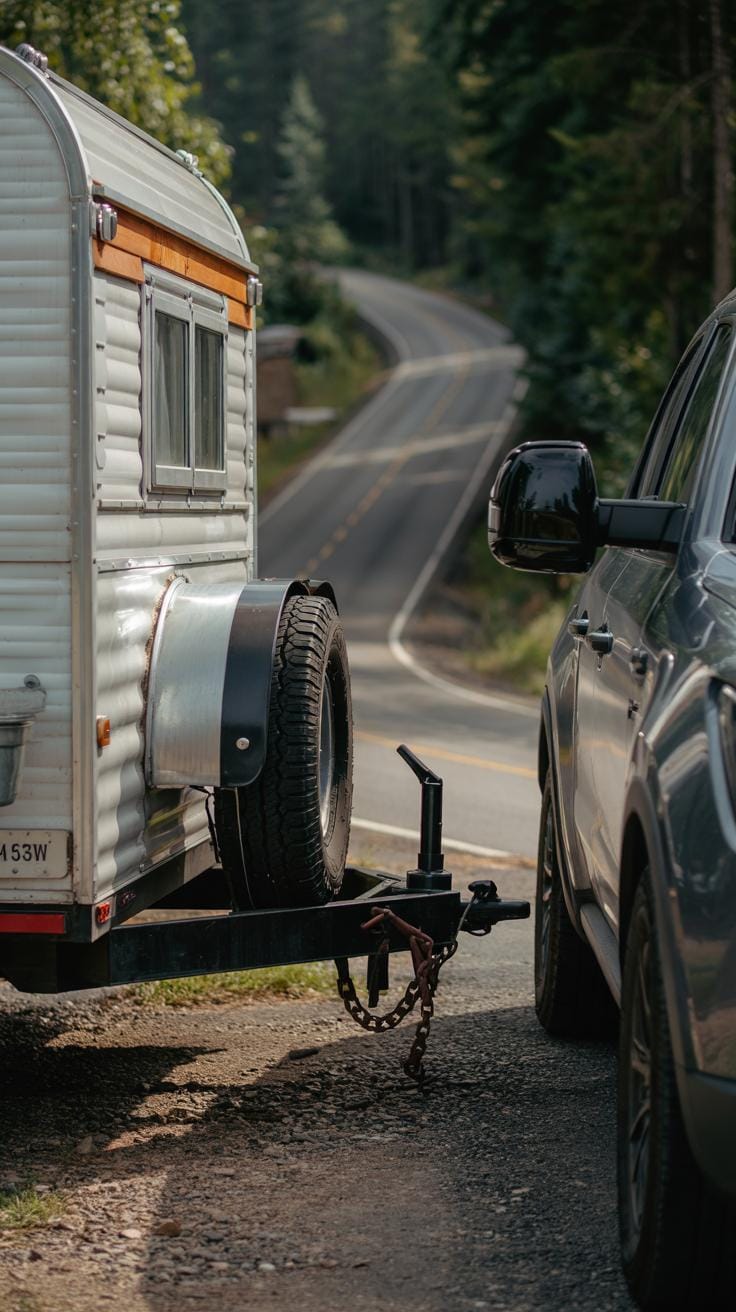Introduction
Living in a small tiny house offers a unique lifestyle that focuses on minimizing space while maximizing utility. This approach can reduce housing costs and environmental impact. More people are considering tiny houses as a practical alternative to traditional homes. Such homes range typically up to 400 to 600 square feet and can be either fixed or mobile. Their compact nature demands efficient use of every inch, creating opportunities for innovative solutions in design and daily living.
Understanding how to live effectively in a small tiny house includes exploring storage ideas, multi-functional furniture, and minimalist habits. Are you ready to rethink how your living space works for you? This article guides you through essential topics related to compact living, helping you make the most of your tiny home. Each chapter presents practical advice and questions to consider as you contemplate or improve your small living environment.
Understanding the Tiny House Movement
The tiny house movement started around the early 2000s as a reaction to rising housing costs and growing environmental concerns. People wanted to live simpler lives with less debt and smaller carbon footprints. Early tiny houses were often DIY projects built on trailers to allow mobility. Key milestones include TV shows and social media sharing tiny living stories, which helped many to rethink what “home” means. The movement grew from niche groups to a wider audience looking for financial freedom and greener living. How much space do you really need to feel at home?
Tiny houses usually measure between 100 and 400 square feet. They come in two main types: mobile homes built on trailers and fixed small homes placed on permanent foundations. Mobile tiny houses offer freedom to move but can face zoning restrictions. Fixed tiny houses may provide more stability but often meet strict building codes. Styles vary from rustic cabins to modern minimalist designs. Residents face challenges with zoning laws, access to utilities, and sometimes skepticism from neighbors. Deciding between mobility and permanence depends on your lifestyle and local laws. What trade-offs would you accept to live small?
Maximizing Space in a Small Footprint
Your small tiny house needs smart design to use every inch well. Start with clear zones for different activities: sleeping, cooking, working, and relaxing. Defining spaces with rugs, screens, or furniture helps make the home feel organized and spacious.
Choose furniture that fits your space size and serves your needs. Place seating near windows for natural light and storage beneath. Think vertical for storage and shelving to free up floor area. Wall-mounted hooks and racks keep items off surfaces, so clutter stays down.
Organize by thinking about what you use daily versus occasionally. Store seasonal or extra stuff in hidden spots like under stairs or inside benches. This keeps essentials easy to reach and your home inviting. How much could you reclaim by rethinking your layout and storage?
Storage Innovations
Hidden storage is key to cutting clutter in a tiny house. Use built-in drawers under beds or benches to tuck away clothes and tools. Stair drawers or trip-step boxes can hold items without taking extra space. Look for hollow doors or walls with shallow storage built in.
Multipurpose shelves that fold up or slide out create flexible storage for books, dishes, or supplies. Magnetic strips on walls hold small metal tools and kitchen knives safely. Do you have unused nooks that could be converted to secret storage?
Multi-purpose Furniture
Furniture that does double duty saves space and adds value. A sofa bed lets you switch between lounging and sleeping without extra space. Tables with adjustable heights offer a place to eat, work, or prep food. Ottomans with storage inside hide blankets and teach you to keep essentials ready but out of sight.
Fold-down desks that tuck into walls create workspaces that disappear after use. Chairs that stack or nest help you adjust seating depending on guests. When picking furniture, ask yourself where else the piece can be used and how it can work for your daily life.
Designing for Comfort and Functionality
Comfort and function can coexist in a small tiny house without one sacrificing the other. Choosing furniture that fits the scale of your space prevents overcrowding and keeps movement fluid. Multi-use pieces, such as a sofa that converts into a bed or a dining table that can fold, help maintain versatility while supporting your daily activities.
Incorporate soft textiles and cushions to enhance comfort. They improve the feel of your small living area without taking up much room. Consider built-in seating or storage to reduce clutter that can make a tiny house feel cramped.
When deciding on decor, focus on simplicity and personal touches rather than filling every corner. This approach gives your space style without overwhelming it. How do you currently balance your needs for comfort and practicality within small areas?
Planning your interiors with intention makes your tiny house a place you enjoy living in every day.
Lighting and Color
Lighting plays a vital role in making your small space feel open and inviting. Natural light brightens rooms and creates a sense of depth. If windows are limited, use layered lighting with ceiling lights, task lamps, and accent lights to avoid dark corners.
Choose lighter paint colors like soft whites or pale pastels. These reflect more light and expand the visual space. Using a consistent color palette throughout your tiny house helps unify the rooms and reduces visual breaks.
How does your choice of lighting and color affect how spacious or cozy your home feels? Simple changes like swapping heavy curtains for lighter fabrics or adding mirrors can dramatically alter perception in a small home.
Layout Planning
Effective layout planning helps you define clear zones for living, cooking, sleeping, and working within limited square footage. A well-thought-out floor plan prevents clutter and confusion, improving both comfort and productivity.
Start by identifying your daily routines and allocating space accordingly. Open layouts create flexibility but consider partial partitions or furniture placement to mark different areas. For example, a kitchen island can separate cooking from a sitting area without blocking sight lines.
Think about how furniture arrangement influences traffic flow and use vertical space for storage or work surfaces. Would changing your layout improve your daily activities and reduce stress in your tiny house?
Energy Efficiency and Sustainability
Reducing Energy Use
Proper insulation keeps your tiny house comfortable without raising energy bills. Use rigid foam boards or spray foam in walls and ceilings to reduce heat loss during winter and heat gain in summer. Pay attention to sealing gaps around windows and doors to stop drafts.
Energy-efficient appliances help cut power use in tight spaces. Choose LED lighting, low-wattage refrigerators, and induction cooktops designed for small homes. These appliances use less power but still meet your daily needs.
Have you thought about how much energy your appliances consume? Sometimes switching to smaller, energy-smart devices can reduce your overall energy footprint significantly. Pairing these choices with good insulation creates a powerful combo for efficient living.
Renewable Energy Options
Solar panels offer a clean, reliable energy source for tiny houses. A small roof-mounted system can produce enough power for lighting, cooking, and even heating water. You might consider portable solar setups if permanent panels don’t suit your situation.
Other renewable options include small wind turbines or micro-hydro setups if your location supports them. These systems can work alongside solar to cover more of your energy needs.
Will relying on renewable energy change how you use electricity? Installing an energy monitoring system can help you track use and stay within your power limits. Solar power paired with batteries stores energy for use at night, ensuring your tiny home stays functional and self-sufficient without relying on the grid.
Legal Considerations and Zoning
Permits and Regulations
Before placing your tiny house, check local zoning laws carefully. Many areas limit the size and type of homes allowed on a property. You often need a building permit to ensure your tiny house meets safety codes.
Some counties treat tiny houses on wheels like RVs, restricting where you can park them. Other places may require your tiny home to be on a foundation. Understanding these rules early can save time and money.
Talk to your city or county planning office. Ask about zoning restrictions, building permits, and any special tiny house regulations. This process helps you find legal spots for your tiny home and avoid costly fines.
Overcoming Legal Barriers
If you face zoning limits, consider alternative options. Buying land in rural areas often means fewer restrictions. Joining tiny house communities also provides legal places designed for small homes.
Research local government programs offering permits for accessory dwelling units (ADUs). These units often allow for smaller homes legally attached to existing properties.
Consult with professionals familiar with tiny house laws. They can help you appeal permit denials or suggest modifications to meet code. What compromises are you willing to make to live legally and comfortably in your tiny house?
Cost Benefits and Financial Planning
Lower Costs
Living in a tiny house can save you money right from the start. Construction costs usually run much lower compared to traditional homes because fewer materials and less labor are needed. For example, building a 200-square-foot tiny house often costs under $50,000, while a typical house requires hundreds of thousands of dollars. Lower energy use also cuts monthly utility bills, as heating, cooling, and lighting a small space takes less power.
Maintenance expenses drop too. Smaller homes mean less to clean, repair, and replace. Imagine trimming your upkeep tasks by two-thirds or more. This frees up your time and money for other priorities. Have you considered how much you spend annually on home repairs? Tiny houses reduce these ongoing costs naturally.
Planning and Financing
Start your budget by listing all known costs: land purchase or rental, materials, permits, and labor. Remember to include expenses for utilities, insurance, and regular upkeep. Set aside a contingency fund for surprises during construction or after moving in.
If building the house yourself, track all costs carefully to avoid overruns. For buyers, research lenders who specialize in tiny homes, as traditional mortgages may not apply. You can also explore personal loans or saving gradually before purchasing. Will you prioritize paying off debt or saving for upgrades?
Planning finances around tiny house living demands a realistic view of initial and ongoing expenses. Careful preparation ensures you stay within your means while enjoying the benefits of compact living.
Minimalism and Lifestyle Changes
Living in a small tiny house means shifting your mindset about what you truly need. You must learn to live with less and focus on essentials. Ask yourself which items add value to your daily life. Keeping only what serves a purpose helps prevent clutter from taking over tight spaces.
Start by sorting your belongings and question if each item fits your new lifestyle. Would you use it weekly, or is it just taking space? This approach leads to a simpler way of living, where every possession has meaning. It can change how you view material goods and create room for more important experiences.
Making these changes requires patience as you adjust to fewer possessions. Try small steps like giving away one item a day or organizing your space weekly. These habits prepare you for efficient living in compact homes and help maintain balance between comfort and minimalism.
Decluttering and Simplifying
Decluttering is more about mindset than physical work. Start by setting clear goals for what you want to keep. Sort items into categories: keep, donate, or discard. Focus on what you use often, not what you keep “just in case.”
Try the “one-year rule”: if you haven’t used something within a year, consider letting it go. Ask yourself which possessions support your daily life and which bring stress. Don’t rush – decluttering is a process that takes time and reflection.
Create a habit of regularly scanning your belongings. This helps avoid old habits of hoarding. Visualize the benefits of fewer things: easier cleaning, more space, and less mental clutter. How will you feel once your tiny house feels open and organized?
Adopting New Habits
Your daily habits play a big role in successful minimal living. Build routines that prevent clutter from returning. For example, practice putting things away immediately after use. Avoid buying items on impulse by considering if a new purchase fits your space and lifestyle.
Limit your belongings by organizing storage effectively. Use multifunctional furniture and containers to keep things neat. Develop habits like regular cleaning and checking your inventory, so you don’t accumulate unnecessary items.
Think about how your routine supports your tiny house’s limited space. Could you swap physical collections for digital ones, like books or movies? What small changes can keep life simple and make your compact home feel welcoming every day?
Community and Social Aspects
Building Connections
Tiny house living often draws people toward building close communities. When you live in a small space, connections with neighbors grow stronger out of necessity and choice. Tiny house villages create opportunities to share experiences and provide emotional support. For example, residents might organize regular meetups or help one another with repairs and projects. This fosters a sense of belonging, which can improve your overall well-being.
Communities also help residents trade skills. Someone with woodworking skills might assist others with furniture, while another might offer gardening advice. This exchange builds trust and strengthens neighborhood bonds. Ask yourself: How would your social life change if you lived closer to people who shared your values and goals?
Shared Resources
Sharing resources in tiny house communities helps save money and space. Instead of each household owning duplicate tools, appliances, or outdoor equipment, residents pool what they need. For example, a community shed might hold lawn mowers, bicycles, or power tools accessible to everyone. This reduces clutter in your tiny house and lowers costs.
Shared communal spaces like gardens, kitchens, or lounges encourage socializing and cooperation. These areas allow you to host small gatherings without needing extra space at home. Have you considered how using shared resources could ease your daily routines while boosting your connection to neighbors?
Mobility and Flexibility
Pros and Cons of Mobility
You gain freedom with a mobile tiny house. You can change locations whenever you want, whether to follow the seasons or explore new areas. This flexibility lets you avoid high living costs in certain places and find quieter, less crowded spots. Living on wheels also means fewer property taxes and no need to commit to a mortgage, which can improve your financial freedom.
On the other hand, mobile tiny homes face road regulations that vary by state or country. You must consider size, weight limits, and special permits. Road travel can cause wear and tear on your home, which means regular maintenance is needed to keep things safe and functional. Sometimes, finding good parking or camping spots can be difficult, especially in busy or urban areas.
Travel and Maintenance Tips
Before you hit the road, check all connections—brakes, lights, and tires. Tires especially need regular pressure checks to avoid blowouts during travel. Secure all loose items inside to prevent damage. Plan your route ahead to avoid narrow roads or low bridges that your tiny house cannot pass.
Keep your tiny home clean during travel by wiping surfaces and checking for cracks or leaks after each trip. Lubricate moving parts like hinges and slides regularly to prevent rust and wear. Have emergency supplies handy, such as spare tires, tools, and extra fuel. By staying organized and proactive, you protect your investment and reduce travel stress. How will you make your next move smoother?
Future Trends in Compact Living
Technological Advances
Technology will likely change how you live in a tiny house by making small spaces more comfortable and easier to manage. Smart systems could control lighting, temperature, and security automatically, saving energy and freeing up your time. Imagine voice-activated appliances or apps that monitor water and power use in real-time, helping you avoid waste. Modular furniture might include built-in charging stations, fold-out beds, or walls that shift to create new rooms. Solar panels and battery storage will probably become more efficient and affordable, making tiny houses more independent from the grid. These tools can turn compact spaces into highly functional homes without extra work or clutter. What technology would improve your tiny house experience the most?
Shift in Social Perceptions
People’s views on small living appear to be changing, with more interest in downsizing and sustainable choices. As cities become crowded and housing costs rise, tiny houses may grow more popular. Communities might develop that accept and support compact homes, including changes in zoning laws to allow more tiny houses. Cultural acceptance could lead to new designs focused on blending tiny homes into neighborhoods rather than standing apart. If society sees tiny houses as practical and desirable, you might find more options and lower costs. How would your lifestyle change if small living gained wider acceptance?
Conclusions
Adopting compact living solutions can change how you experience daily life. You might find greater freedom from clutter and a stronger connection to what truly matters. Living in a small tiny house requires thoughtful choices about belongings, furniture, and routines. When you focus on essential items and efficient use of space, your home can feel larger and more comfortable. What will you keep, and what will you let go of in your journey to a smaller, smarter home?
Whether downsizing or just exploring new housing options, tiny houses offer flexible and cost-effective versions of homeownership. Their design challenges encourage creativity and intentional living. Consider how you can apply these compact living principles not only in a tiny house but in other parts of your life. How can simplifying your living space deepen your wellbeing and support your goals? This article aims to support your path toward a practical, well-designed small home.

